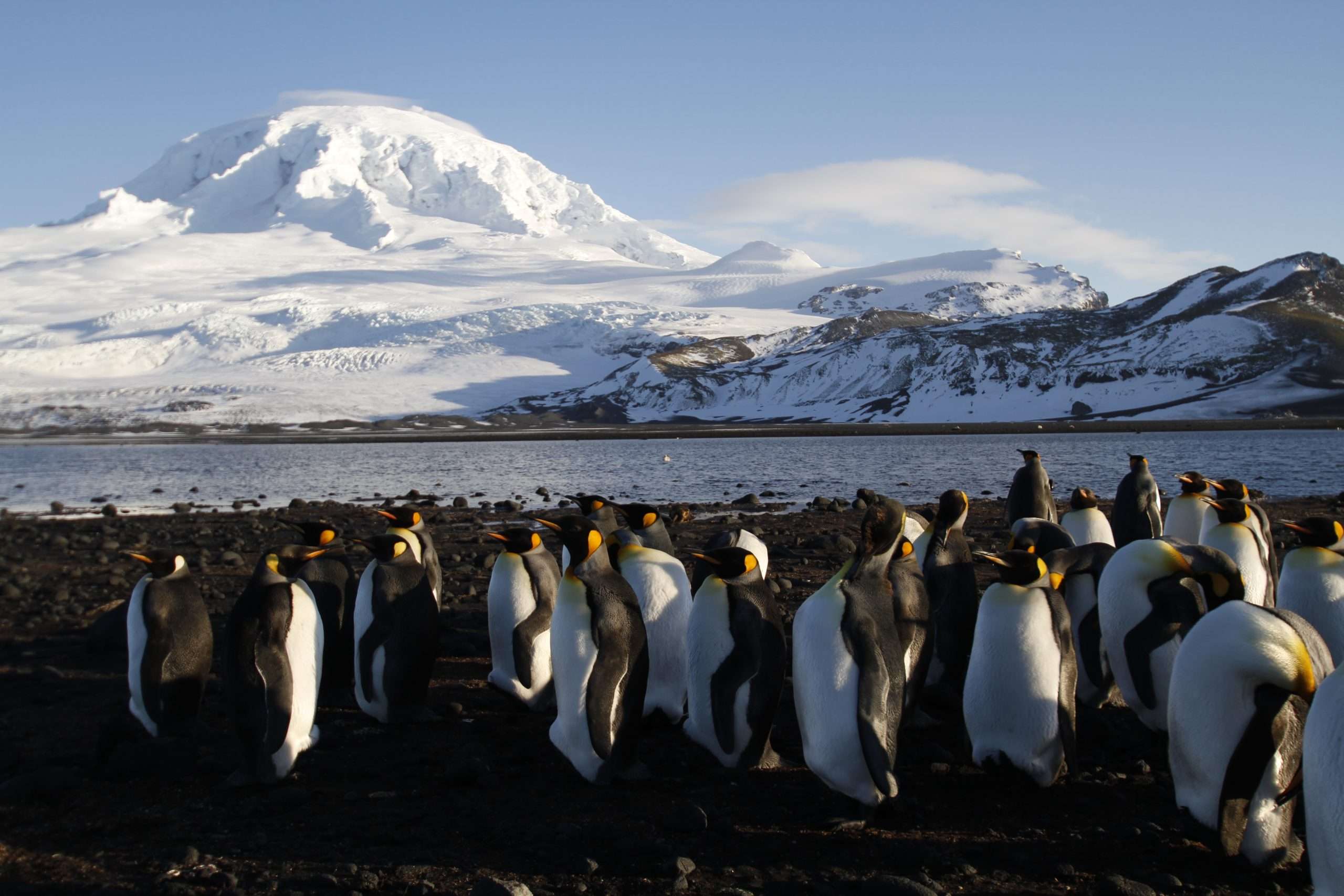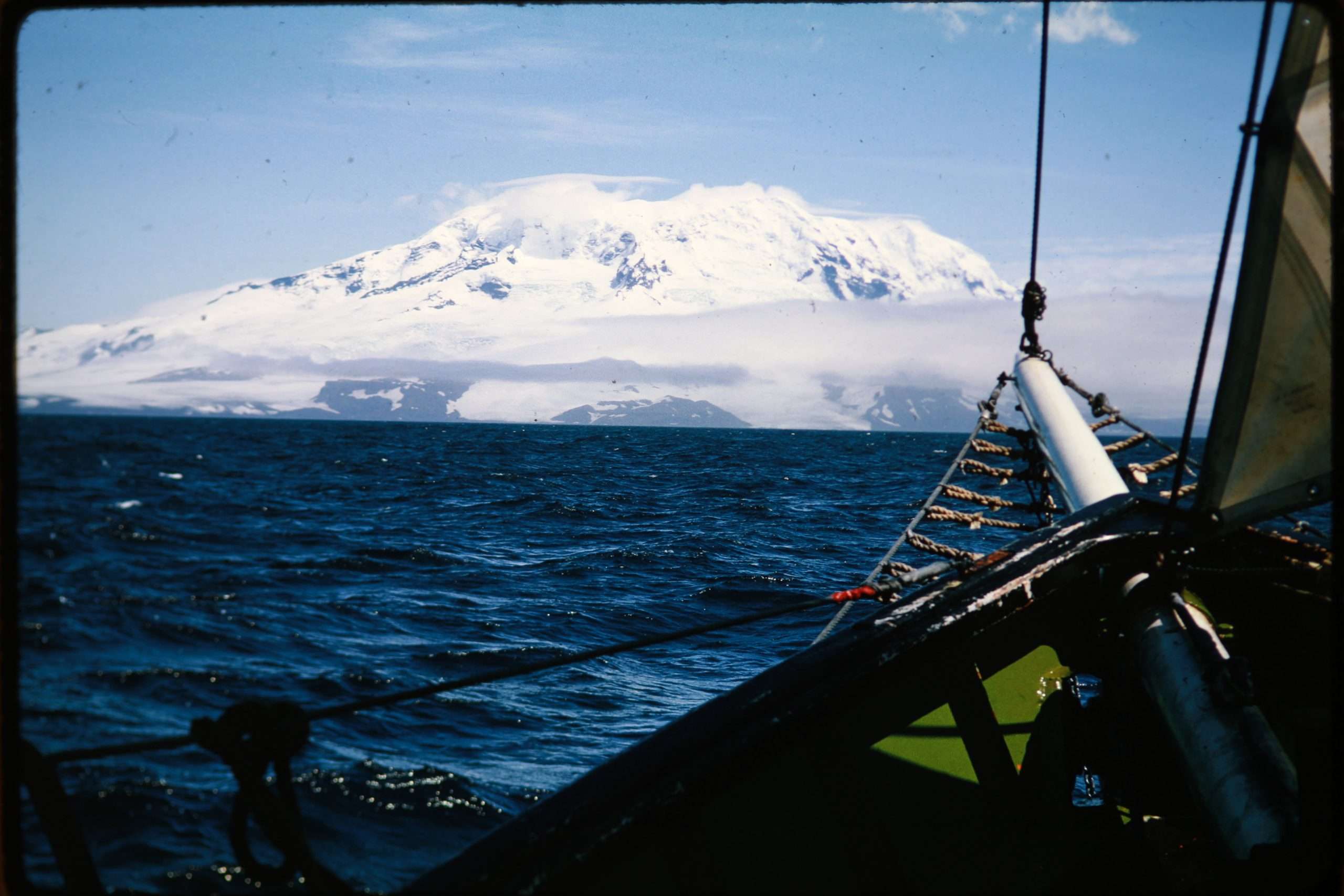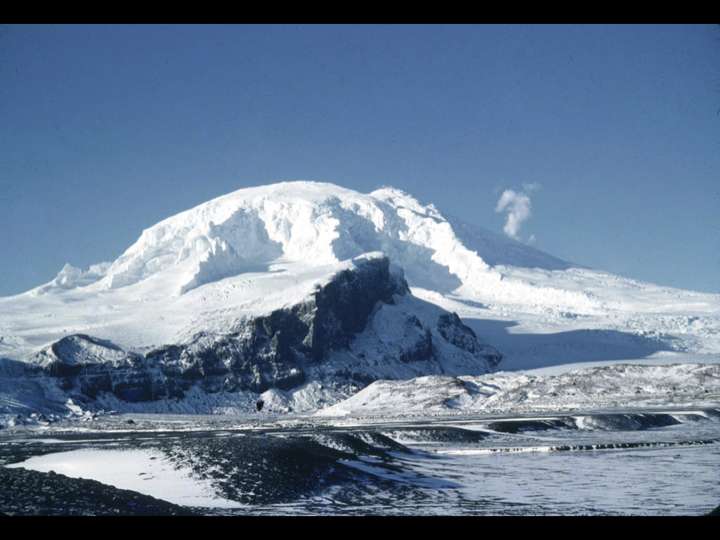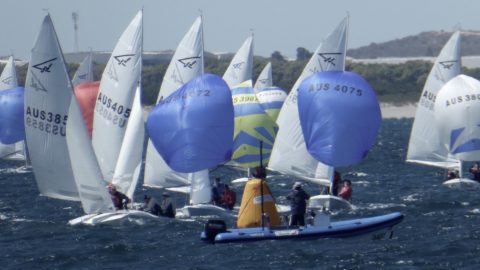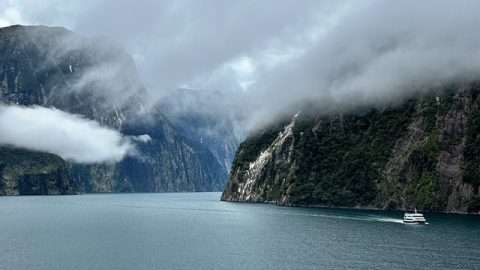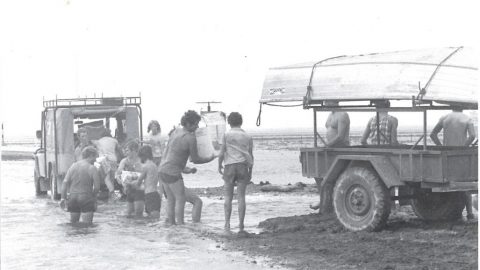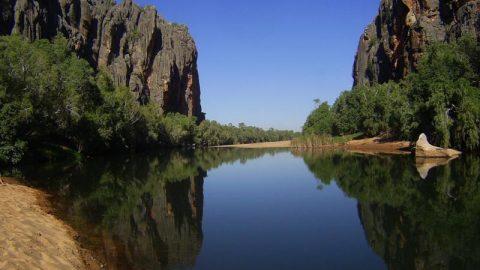Michael Dillon, who made the multi-international award winning film THE GREAT WHITE WHALE, about the attempts to sail to Heard Island and climb Australia’s highest mountain, has been in touch with us to share re-screening dates and to draw to our attention the links between the film and the currently disabled STS Leeuwin.
Michael’s particularly concerned to raise awareness for the fate of the STS Leeuwin, reminding us that one of the expeditioners from his film, Malcolm Hay, pictured below, was so inspired by the Heard maritime adventure that he felt all young people should be given the chance to undertake an adventure at sea, and so he became the driving force behind the building of the Leeuwin.

So, Michael Dillon and co are showing the film again at the LunaSX in Freo on 15 October, and are hoping this will both entertain Freo locals all over again, but also give someone from the Leeuwin the chance to bring everyone up to speed on where the future of the Leeuwin lies.
If you can’t make Freo to see the rescreening, then there are other opportunities. Here they are.
FREMANTLE LunaSX Tuesday Oct 15th 6.30pm (ie quite soon)
BUSSELTON Orana Cinema Sunday Oct 27th 6.15pm
ALBANY Orana Cinema Sunday Oct 27th at 6pm (yes the Whale has magic powers and can be in two places at once)
PERTH Luna Leederville Wed Nov 20 6.45pm
The backstory to Great White Whale goes something like this.
The Great White Whale isn’t a whale. It’s a mountain. A mountain few have heard of. On an Island few have heard of. The name of the Island is Heard Island.
Heard Island, 2000km south- west of Albany, is a snowy volcanic island that rears up from the sea like a Great White Whale. It is named after the person who first sighted it, the eagle-eyed Mrs Heard, who pacing the deck of a ship that had set a course a little south of the normal shipping route, alerted her husband, the captain, and it was put on the charts.
The news soon spread to sealers, who last century plundered its wildlife almost to extinction. It was during this period that its highest peak was named Big Ben, in honour of a sealer named Ben who was big.
Later it became a British possession, which in 1947 they gave to Australia. And thus, at the stroke of a pen, its highest peak, Big Ben, five hundred metres higher than Mt Kosciuszko, became Australia’s highest peak.
When the world’s highest peak, Everest, was first climbed in 1953, Australia’s highest peak, remarkably, remained unclimbed.
The first serious attempt to climb Big Ben took place in 1963, ten years after Everest was first climbed. A three- man team attempted it, and almost died in five different ways, as the film so graphically shows.
Although it had almost killed them, two of those men, Dr Grahame Budd and Warwick Deacock were hell bent on trying again. They saw themselves as Captain Ahab, with their shared obsession to overcome their Moby Dick- The Great White Whale.
They decided to charter a yacht and sail to the Island, a 4000km journey, through the world’s wildest seas. Their last Australian port of call would be Albany.
The filmmaker, Michael Dillon, was a teenager when they set off. He knew the leader of the Expedition, Warwick Deacock, through the Duke of Edinburgh’s award scheme. Warwick had helped introduce the scheme to Australia and Michael had been the first Australian to receive the Gold Award.
Some years later Michael accompanied Warwick Deacock on one of the first commercial treks to the Everest region. Warwick was filming there for the ABC, but he became ill with altitude sickness, and he handed the camera to Michael. It would be the first time Michael had ever used a 16mm camera but certainly wouldn’t be the last. Michael recently celebrated 50 years of Adventure filmmaking, including many projects with Sir Edmund Hillary. He conceived and filmed Tim Macartney-Snapes Sea to Summit Everest Expedition, a bi-product of which was the creation of the Perth based “Sea to Summit” outdoor equipment brand. Michael’s film of that climb “Everest Sea to Summit” won eight Grand Prizes at International Mountain and Adventure Film Festivals worldwide. In 2022 Michael was awarded the Grand Prize for lifetime achievement by the International Federation of Mountain Film Festivals, the first time anyone from the Southern hemisphere has been awarded it.
What attracted Michael to make this film was “the story, this amazing, forgotten, Australian story. It’s one I knew about from the beginning as I was one of many who volunteered to get the boat ready to sail on time”
Michael already knew the leader Warwick Deacock, but he got to know the other extraordinary individuals who set off on this epic voyage. Most of them hadn’t even sailed before, “and one of them, the bravest of them all, couldn’t swim”, said Michael.
Michael believes that although some might have declared them insane, they were probably the brightest boatload ever to set sail. “Their combined IQ level was massive” says Michael.
The skipper was a brilliant author names Bill Tilman, a doyen both of exploration and of exploration literature. Tilman was leader of the 1938 Everest Expedition, and after many other notable land- based adventures he switched in his fifties to sea-based adventures, sailing in small boats to many remote parts of the world.
The first mate was a great scholar too. Tony Hill was dux of Sydney Grammar and later became a distinguished headmaster, including being Headmaster of Perth’s Christ Church Grammar from 1982-7.
Of the ten men, three were medical doctors, and they liked to joke that they spent most of their time treating each other. One of them, Russell Pardoe, had saved a man’s life in Antarctica by performing brain surgery after practicing on a seal. Another was Dr Malcolm Hay, from Perth, who had just become an orthopaedic surgeon, and was destined, as is later explained, to make a huge contribution to Western Australia.
Probably the brightest of them all was Colin Putt, ships engineer. Colin had a Mensa level IQ and when someone described him as “able to fix anything with anything and make it last forever” it wasn’t far from the truth. This film shows us the fourteen- seater car Colin built himself, shows him fixing a problem with the ship with corn flakes, and tells how, just before their final port of call in Albany, they’d realised their anchor wasn’t heavy enough. Colin’s solution, once in Albany, was to go to the very end of the railway track between Perth and Albany and oxy cut off the last half metre of each rail, “because the train would have hit the buffer before it needed that part of the rail”. They welded the two rails to the anchor, and it became a very effective anchor. “No-one on the railway noticed”, says Colin with a wicked smile.
Most memorable of them all is John Crick. John was selected for the expedition, aged twenty two, as “apprentice expeditioner”. With no sailing experience he got off to a bad start by breaking the Skippers thumb when he let the jib swing wildly, but he soon redeemed himself and became a key part of the summit attempt.
When Michael, the filmmaker, got all the expeditioners, decades on, to sit down and tell their stories, John surprised everyone by standing up and singing the story. John had long retired from school teaching to become a singer story-man, and that’s what he’d decided to do- to sing the story, as befits the epic saga that their Heard Island expedition was.
Additional music for the film was composed by Paul Jarman, and the soundtrack of this film is one of its greatest assets. Someone has said you can sit through this film with your eyes closed and still feel very glad you came.
Another value of the film is that it gives Australians the rare chance to see a part of their territory that one of the expeditioners describes as “a jewel, an absolute jewel”.
The film is timely because the Australian Government plans to extend the marine protection zone around Heard Island, and a public consultancy is underway to help it decide how extensive and watertight this protection zone should be.
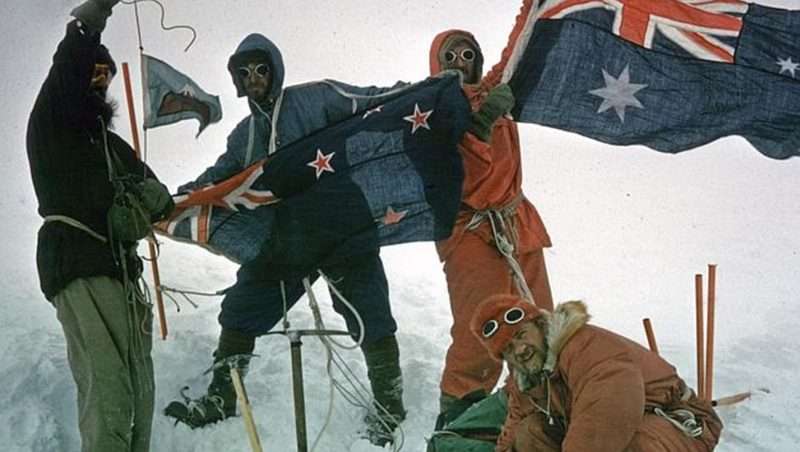
Michael had been testing the waters internationally, sending evolving versions of the film to International Mountain Film Festivals. He was encouraged when the earliest version of the film won the Grand Prize at the International Mountain and Adventure Film Festival in Bilbao Spain last December. Since then, it has won four more international awards.
Finally, there are two other Western Australian connections to this story, one with a sad ending, and one with a very happy one.
The first involved the boat they had chartered for their expedition to Heard Island and back.
Its name was Patanela, a Tasmanian crayfish schooner. It did indeed get them there and back, but several decades later, a Perth businessman, Ken Jones, chartered it for a voyage from Fremantle to Queensland. Somewhere off the NSW coast the boat disappeared. Ken, his wife, two crew, and Patanela itself were never seen again, and the circumstances of their disappearance are still a mystery. It’s now the longest running marine investigation in Australian history.
The loss of Patanela was balanced by the birth of another boat. A reincarnation, some might say.
One of the ten men that sailed to Heard Island was Perth Orthopaedic Surgeon, Dr Malcolm Hay.
Safely back home, and inspired by the sailing adventure he’d had, he watched as millions of dollars were poured into the Alan Bond syndicate’s challenge for the America’s Cup. Malcolm felt that for a fraction of that money it would be possible to build a sail training ship so that young people could have an adventure at sea, just as he had. And so was born the Fremantle based Leeuwin, Australia’s largest Sail Training Ship. For decades now, it has enabled over thirty thousand young Australians to have a character building, and sometimes career defining, adventure at sea.
For the emotional climax of the film, the filmmaker, Michael Dillon, spent a week sailing on the Leeuwin. Michael’s own life of adventure had started in the Scouts and through doing the Duke of Edinburgh’s award, and to see for himself both organisations using the Leeuwin to help inspire today’s young people, left an indelible impression on him.
“I felt my life had gone full circle” says Michael, “and I knew that Western Australia should be the place where this film should first be widely seen”.
So get along to the movie on 15 October.
In fact, why don’t you book now!
~~~~~~~~~~~~~~~~~~~~~~~~~~~~~
* If you’d like to COMMENT on this or any of our stories, don’t hesitate to email our Editor.
** WHILE YOU’RE HERE –
PLEASE HELP US TO GROW FREMANTLE SHIPPING NEWS
FSN is a reader-supported, volunteer-assisted online magazine all about Fremantle. Thanks for helping to keep FSN keeping on!
*** Don’t forget to SUBSCRIBE to receive your free copy of The Weekly Edition of the Shipping News each Friday!
****AND Shipees, here’s how to ORDER YOUR FSN MERCH. Fabulous Tees with great options now available!
